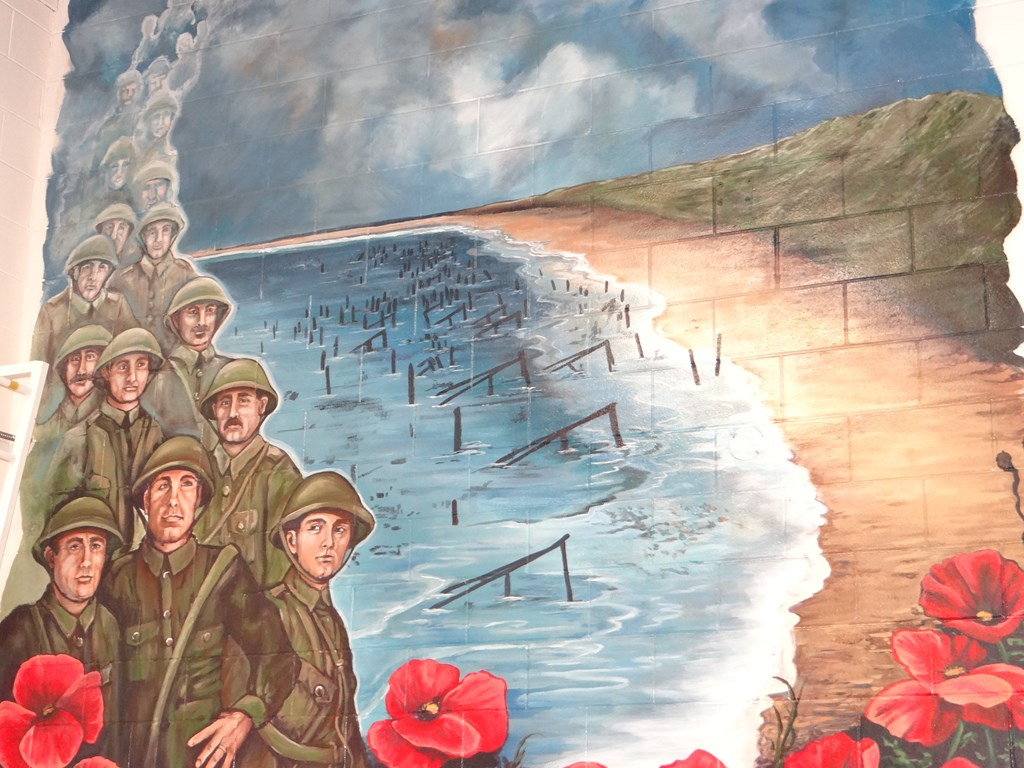Who We Are
At École Dieppe School
Our mission is to provide a safe and stimulating environment which promotes academic growth, encourages mutual respect and responsibility.
School Agreement:
- We speak respectfully.
- We act in a respectful manner.
- We include everyone and are welcoming.
- We are mindful and learn and play safely.
Belief Statements:
At École Dieppe, where every child thrives, we believe in:
- TEAMWORK which fosters open-minded citizens and leaders.
- Fostering strong RELATIONSHIPS based on respect, open communication and partnership
- Discovering learning through PLAY.
- Creating a NURTURING environment where we celebrate strengths and differences as a community.
- Fostering a love of FRENCH as life-long learners.
Learning Together, We Inspire Hope and Nurture Learning.
Where did the name Dieppe come from?
Dieppe is the universal shorthand for the August 19, 1942, operation Jubilee. That's the code name given to the invasion of the French port, where primarily Canadian solders carried the first large scale battle across the English Channel to test the allies' capacity to successfully attack occupied Europe. And more than 500 of those Winnipeg soldiers, Cameron highlanders, came from this city and province - from houses on its streets where many of you live today - to do the fighting.
Those Winnipegger's were members of the Queen's Own Cameron Highlanders of Canada. It is a storied regiment in the best Scottish warrior tradition, now more than 100 years old, with many battle honors from the First World War, and many more after the Battle for Dieppe. Its survivors and successors played major roles in the subsequent campaign to free Europe from the fascist oppression of the Nazi's in 1945. The unit exists today as a very active Reserve Army regiment based at Minto Armories at 969 St. Matthew's Avenue.
The Cameron's were not alone, of course. Some 5,000 soldiers from the Canadian Second Division, stationed in Southern England, and a token few other army allies, crossed the English channel in 250 vessels, mostly small landing craft, R-Boats, carrying assault troops for the surprise attack. They had the support of 60 tanks, Royal Navy warships and 70 squadrons of fighter aircraft flown by pilots from all over the British Commonwealth.
Alas, the vital element of surprise was lost early and Canadian were lashed with withering machine-gun and artillery fire from pillboxes on cliffs overlooking the beaches where the troops landed.
The Cameron's, alongside the South Saskatchewan Regiment, hit the beach at a small suburban community called Pourville, west of Dieppe. They landed in the hail of gunfire, bravely bagpiped ashore LCpl Piper Alex Graham playing a medley of traditional battle tunes.
Against awful odds the Cameron's pressed inland - the furthest of any of the seven Canadian units. But early on, it was clear a planned 24-hour occupation of Dieppe and orderly withdrawal was not going to happen. Instead, disaster followed, valued only by the lessons learned for the D-Day invasion in 1944.
The Dieppe toll: the Canadians had 3 439 casualties. The attacking force lost 907 men to death or mortal wounds. The Germans captured another 1946. Cameron casualties, dead (including LCol Alfred Gostling, the Camerons' commander), wounded and captured, totaled 346 men lf the 503 of them who were sent ashore. That's about the population of our school.
École Dieppe School perpetually honours them all with its name.

This is our tribute mural located in our school gym.
 École Dieppe
École Dieppe 

Please provide your question and email address in the fields below.
Your question has been successfully submitted.
CloseThank you.